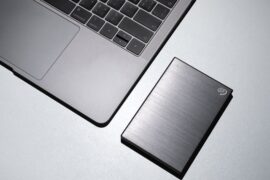It should be possible to access an old hard drive if the drive was initially used with a Windows PC, but you will need to know the right tricks. Here is how to Recover Data From An Old Hard Drive.

How to retrive Data From an Old Hard Drive
Before beginning, you need to decide how you’ll connect the hard drive to your PC. It’ll depend on the connection standard it uses. This step could be the trickiest part of the process if you do not have a cable that fits the old hard drive.
Connecting the Hard Drive to Your PC
IDE/ ATA/ PATA Internal hard drives from the late 1980s through the 1990s used IDE cables and, latterly, ATA or PATA cables. You’ll need an IDE to USB adapter or internal drive enclosure to connect the drive to an ultramodern PC. Be careful to identify the drive you have before buying an adapter, as several IDE versions hit the PC market over its decade and a half of dominance.
SATA Internal hard drives switched to SATA around the time 2000, and it remains the most common connector for internal hard drives moment. You can connect a SATA drive by installing it on a desktop. Alternately, you can connect it externally via a SATA-to-USB adapter or an internal drive enclosure.
eSATA This standard was planted on some external hard drives from around 2000 to 2010. Utmost new PCs do not have an eSATA port, so you will need an eSATA-to-USB adapter.
FireWire This standard was favored by Apple from 1999 to 2008 and used by some external hard drives. current PCs will need a FireWire to USB adapter.
USB The most common standard for external devices, you may find USB on external hard drives from the late-90s to the present day. Some USB external hard drives use the USB Type-A connector, but others use the less standard Micro-B SuperSpeed connector ( pictured below).

Connect the hard drive to a USB port on your PC ( using an adapter, if necessary). Aged, larger external hard drives may also need to be connected to external power.
hold on to Windows to identify the hard drive. This process may take several moments.
A notification will appear asking what you’d like to do with the hard drive. Select Open folder to view files and recover data From the old hard drive
You can now browse files on the old hard drive as you would any external hard drive or USB thumb drive.
How Do I Transfer Files From an Old Hard Drive to a New Computer?
Once connected, transferring files from the old drive to your current PC works as it would with any external drive. Now you can safely Recover Data From An Old Hard Drive to your computer.
nevertheless, read how to replicate a hard drive on Windows, If you want to transfer the hard drive’s contents in their wholeness. Cloning is helpful if you are going to preserve the contents of an old drive on a newer, more reliable drive.
Warning
Never clone an old hard drive that someone previously used as a boot drive to a new PC’s boot drive, and never attempt to use an old hard drive as the boot drive in a new PC. Your old hard drive will contain driver and configuration data specific to the other PC. Attempting to boot from that drive on a new PC may cause it to crash.
Is It Safe to Access an Old Hard Drive on a New PC?
Yes, it’s generally safe to pierce an old hard drive on a new PC.
Connecting an external drive to a PC is always a threat, as a driver may contain malware designed to transfer to any device to which it’s connected.
However, malware found on an old hard drive will be programmed to take advantage of an aged machine. The malware may rely on exploits that are now renovated or no longer applicable. Old malware is more likely to be identified by your computer’s antivirus software than newer trouble.
It’s not technically impossible for old malware to harm a new PC, but the danger is much lower than that of encountering malware while browsing the new age Internet.

Leave a Reply